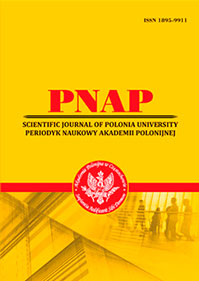SYNTACTIC MARKERS OF EFFECTIVE COMMUNICATION WITH INTROVERTS AND EXTRAVERTS: A PSYCHOLINGUISTIC EXPERIMENT ON VERBAL INFLUENCE
Abstract
The article examines the relationship between personality psychotypes (introvert/extravert) and the syntactic organization of their speech, as well as the effectiveness of verbal influence on individuals of different psychotypes.The relevance of the study is driven by the needs of contemporary psycholinguistics, cognitive linguistics, and communicative linguistics to explore the ways in which an individual’s inner state is encoded by language means. The study is based on the ideas of C. Jung, H. Eysenck, N. Chomsky, R. Cattell, as well as on the concept of syntactic projection of deep structures of consciousness. The aim of this research is to identify characteristic syntactic structures in the speech of extraverts and introverts, along with the effective verbal strategies for persuading representatives of these psychological types.The study material consists of speech segments of literary characters in English-language novels: Agatha Christie’s “The Tragedy of Three Acts”, Arthur Conan Doyle’s “The Hound of the Baskervilles”, J.K. Rowling’s “Harry Potter and the Chamber of Secrets”, and A.A. Milne’s “Winnie-the- Pooh”. Prototypical speech models for the introvert (Sherlock Holmes, model “SH”) and for the extravert (Hercule Poirot, model “HP”) were distinguished and analyzed in detail.At the first stage of the investigation, a syntactic analysis of 600 dialogical fragments was conducted, which enabled the identification of structural and communicative features characteristic of each psychotype. Thus, it was discovered that introverts tend to use compound and complex, extended constructions with clear logical connections, whereas extraverts favor short, simple sentences and interjections.The second stage involved a field psycholinguistic experiment on verbal persuasion of real life individuals whose speech corresponded to the identified models. A conclusion was drawn that accounting for the interlocutor’s psychotype in the syntactic construction of speech enhances the effectiveness of communicative influence. The results showed that suggestion and persuasion are more effective when using syntactic models opposite to the addressee’s own psychotype.These findings open prospects for further research on optimizing communication by considering the psycholinguistic characteristics of both the speaker and the listener, which comes hand in glove with the well-known psychological drive for gestalt completion. The study materials have a practical application in psycholinguistic counselling, profiling, NLP, and cognitive dialogue modelling.
References
2. Корольчук М.С., Осьодло В.І. Психодіагностика / За заг. ред. М.С. Корольчука. Київ : Ніка центр, 2009. 400 с.
3. Морозова І.Б. Мовленнєві механізми успішного діалогізування (на матеріалі сучасного англомовного художнього діалогу). Науковий вісник Херсонського державного університету. Серія «Лінгвістика» : збірник наукових праць. Випуск ХХ. Херсон : ХДУ, 2013. С. 128–134.
4. Морозова І.Б. Ускладнене речення як індикатор інтелектуального рівня віртуального мовця. Записки з романо-германської філології, 1(52), 2024. С. 134–147. DOI: https://doi.org/ 10.18524/2307-4604.2024.1(52).310314.
5. Ярцева О., Морозова І.Б. Лінгвальні принципи профілювання віртуальної особистості. Актуальні питання гуманітарних наук : міжвузівський збірник наукових праць молодих вчених Дрогобицького державного педагогічного університету імені Івана Франка. Дрогобич : Видавничий дім «Гельветика», 2022. Вип. 51. С. 386–393. DOI: https://doi.org/10.24919/2308-4863/51-60.
6. Cain S. Quiet power. Ldn: Penguin. 2016. 352 р.
7. Eysenck S.B., Russell T., Eysenck H.J. Extra- version, intelligence, and ability to draw a person. Perceptual and Motor Skills, 1970. 30(3). Р. 925–926. https://doi.org/10.2466/pms.1970.30.3.925.
8. Heidegger M. Unterwegs zur Sprache. Berlin : Neske, 1982. 269 p.
9. Jung C. Psychological Types. London–New York : Routledge, 2017. 298 p.
10. List J. The Day Tomorrow Began. University of Chicago Press, 2021. 248 p.
11. Morozova I.B., Pozharytska O.O. Characters’ Pil- grimage from the Canon to Fanfiction: A Gestalt Approach. The IAFOR Journal of Literature and Librarianship. Volume 10. Issue 1. July 28, 2021. Pp. 78–96. DOI: https://doi.org/10.22492/ijl.10.1.
12. Morozova I., Pozharytska O., Artemenko Y., Bykova T., Ponomarenko O. Digital discourse in the English-language fiction. AD ALTA : Journal of Interdisciplinary Research. 11/02-XXII. The Czech Republic, 2021. Pp. 87–90. URL: http://www.magnanimitas.cz/11-02-xxii.
13. Nickerson С. Simply Psychology. New York : Bantam Books, 2007. 346 p.
14. Perls F. Gestalt Therapy. Chicago : Chicago University Press, 2001. 367 p.
15. Pozharytska O., Morozova I., Miliutina K., Gusieva G., Lenska O.. The Computer Game as an Alternative Artistic Discourse. Theory and Practice in Language Studies. Vol. 13, No. 2. February, 2023. Pp. 311–317. DOI: https://doi.org/ 10.17507/tpls.1302.05; URL: https://tpls.acad-emypublication.com/index.php/tpls/article/view/5466.
16. Taylor L. Introversion with literary characters. London : Morton and Duberty, 2015. 434 p.
17. Watts H. Great Detectives. Psychotypes and Motivation. London : Simon and Shuster UK, LTD, 2003. 235 p.

This work is licensed under a Creative Commons Attribution 4.0 International License.
 ISSN
ISSN 


.png)




